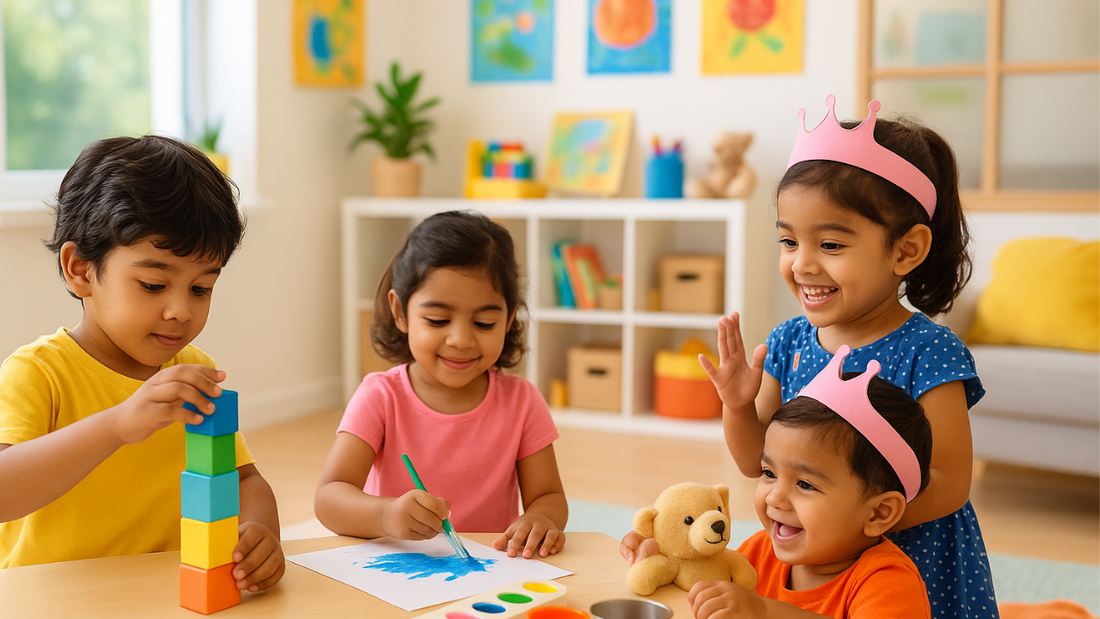
The Science of Play: How Early Learning Happens Through Play
LiLLBUDPlay often gets dismissed as just a way to have fun, but research reveals it’s actually a key part of how kids grow and develop. In those early years, children’s brains make millions of new connections every single day. Play acts as the perfect backdrop for learning, letting kids explore, experiment, and understand the world around them. Through play, they build cognitive, social, emotional, and physical skills that lay the groundwork for a lifetime of learning.
Cognitive Development: Building Thinking and Problem-Solving Skills
One of the biggest advantages of play is how it boosts cognitive growth. Activities like building blocks, solving puzzles, and engaging in pretend play help kids sharpen their problem-solving abilities, spatial awareness, and creativity. Pretend play is especially helpful as it encourages kids to make decisions and plan, letting them try out different roles and situations. Even those simple activities like stacking toys or sorting shapes set the stage for future math and science thinking.
Social and Emotional Growth: Learning to Navigate Relationships
Play is usually a social activity. By interacting with others, kids pick up essential social and emotional skills. Sharing, taking turns, negotiating, and cooperating are all part of group play, teaching children empathy and how to handle their emotions. For instance, when two kids squabble over a toy, they practice communication and conflict resolution—skills that research shows are crucial for social success as they grow.
Physical Development: Strengthening Bodies Through Play
Active play is vital for physical development and coordination. Running, climbing, jumping, and handling small objects all help strengthen fine and gross motor skills. This kind of play doesn’t just build strength, balance, and agility; it also promotes brain development by stimulating the connections between movement, perception, and thinking. A child who practices climbing or throwing gains both confidence and body awareness, which are essential for healthy growth.
Language and Literacy Development: Play as a Communication Tool
Play also naturally enhances language and literacy skills. Storytelling, role-playing, and singing games all help expand vocabulary, improve sentence structure, and boost listening skills. When kids engage in pretend play, they practice conversations, ask questions, and describe events—skills that are closely tied to reading comprehension and early literacy.
The Neuroscience Behind Play
Studies in neuroscience show that play lights up the prefrontal cortex, which controls important functions like planning, attention, and self-control. Play strengthens the neural connections that help kids process information and adapt to new things. Kids who have a wide range of play experiences build cognitive flexibility, creativity, and resilience—qualities that are essential for learning throughout their lives.
Practical Tips for Encouraging Play-Based Learning
- Offer open-ended toys like blocks, art materials, and dress-up clothes.
- Encourage outdoor play to get kids moving and exploring.
- Join in on pretend play to help model language, social skills, and creativity.
- Limit screen time so kids can have hands-on, imaginative experiences.
- Rotate toys regularly to keep things fresh and interesting.
Conclusion: Play Is a Cornerstone of Learning
Play isn’t just a fun way to pass the time; it’s a scientifically supported foundation for early learning. Cognitive, social, emotional, physical, and language skills all thrive when kids are given the chance to play. Parents and educators who focus on safe, engaging, and age-appropriate play help kids acquire the tools they need for academic success, social skills, and emotional resilience. The science is clear—learning through play isn’t optional, it’s essential.

